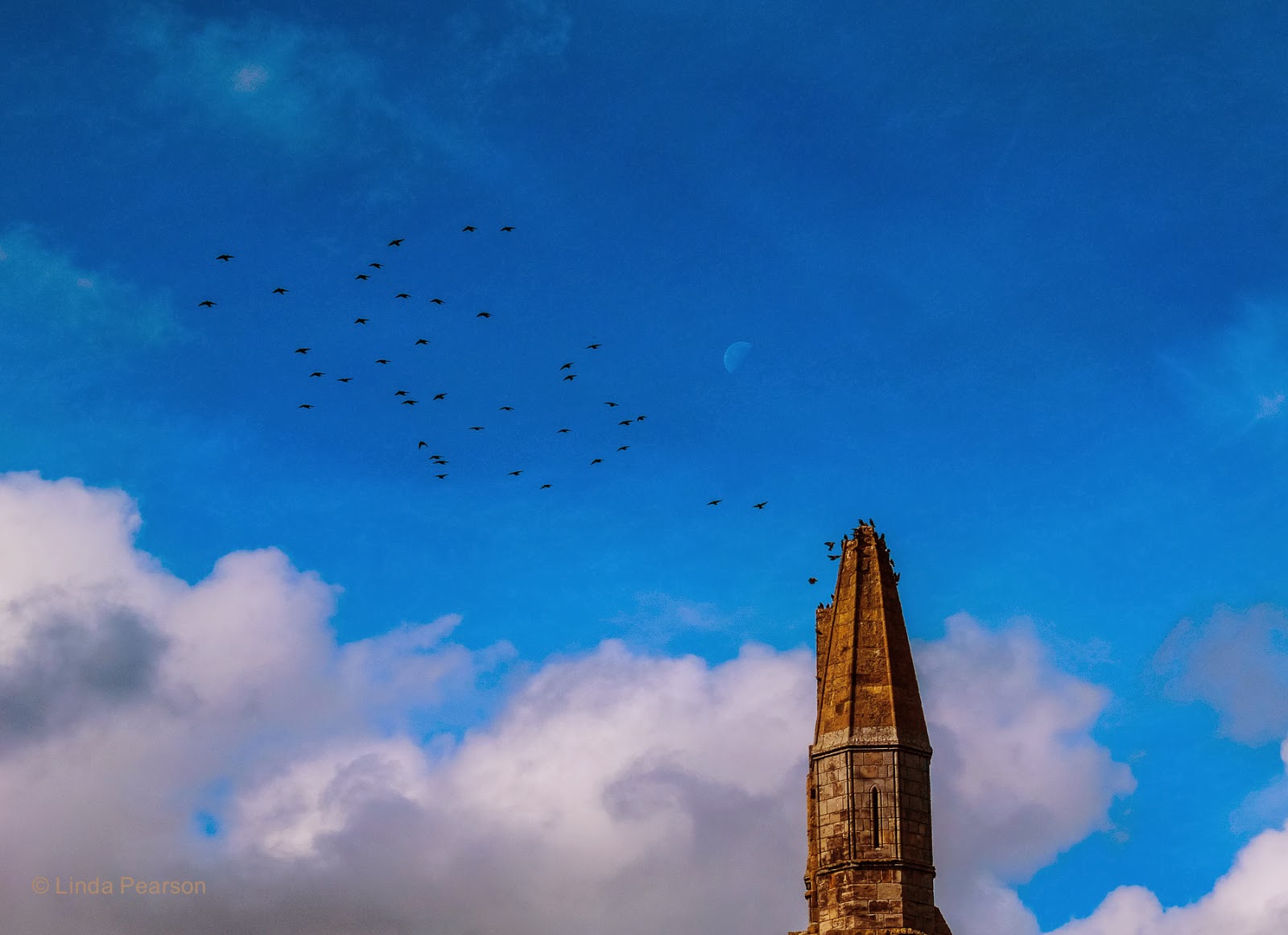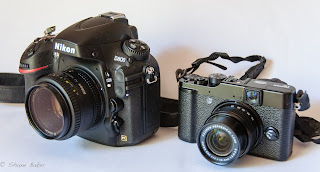My wife and I recently returned from a five week trip to Britain and France. Naturally, I saw this as a photo op as well as a holiday, and took cameras with me. Eight or nine kgs of cameras.
In 2011, we did a similar trip, where I took my Nikon D300 (a crop frame SLR) with my 24-70 f/2.8 and my then-new 14-24 f/2.8. I was surprised to discover that 90% of my images were made with the 14-24 on that trip - but bearing in mind that with the crop frame APS-C sensor, the lens is a 21-36mm equivalent lens, in retrospect that's not so surprising.
 |
| Bruge |
On this trip, I took my monster D800 with those two lenses, plus a few odds and sods, including a light meter, a 50mm f/1.8 and ND and polarising filters.
I also took my new Fujifilm X100s - and seriously considered taking this alone. A friend of mine who is a mirrorless convert pushed me in that direction, and photographer
Valérie Jardin had recently demonstrated it was possible to take the Fuji alone on a four week holiday. In the end, I compromised by also taking the Fuji - which is tiny by SLR standards. I also undertook to "do" Paris with the Fuji only.
So - how did it go?
Well, with the greatest respect, unless you are like Ms Jardin, a street photographer, I can't see the X100s as a replacement for an SLR. It's a brilliant camera, but the fixed focal length lens places some limitations.
Take the shot of Notre Dame to the right. A pleasant enough shot, and the camera handled to demanding light well, but the fixed 35mm equivalent lens means that I didn't get the whole edifice.
"Zoom with your feet", I hear you cry, and in many cases, that's valid. However - in places like Paris, which are awash with @#$%^*! tourists (why can't they leave people like you and mean alone?) getting back will mean including endless people - many wearing distracting colours.
The Nikon, with its wider lens would have been better in that case.
On the other hand, the Fuji came into its own capturing this candid shot in the Louvre.
Could I have got it with the D800? Probably - but I think this young woman might have noticed the big, black, intimidating camera and possibly been distracted by having it pointed at her. (The man in the image below was - and he wasn't even the subject of the shot.)
Clearly, it's horses for courses. The beauty of the Fuji is that weighs almost nothing and takes little space. It's easy to carry in your bag, or even a (capacious) jacket pocket - and it looks like your grandad's old film rangefinder, so no-one cares.
What about the D800?
Well, I'm glad I took it, but it's not a snapshot camera. With its 36 megapixel sensor, it's a demanding, unforgiving camera, and you blaze away with it at your peril.
 |
| The man on the right has noticed my D800! |
On the other hand, it can produce luscious colours and detail. The images below, shot in early light in Yorkshire have a detail and depth of colour for which the D800 and its SLR kin were made.
What about lenses? Well, with the full frame D800, the 24mm setting on the 24-70 was wide enough for almost all occasions, and I only used the 14-24 once. It probably could have stayed at home.
And the other gear could have stayed as well. I didn't have time to use the filters - although the polarising filter would have been useful once or twice. I also used the light meter only once - again due to time pressures.
At times, I could have used a tripod. The weather wasn't great for much of the trip, and the need to use small apertures on the full frame D800 for necessary depth of field created problems. It's an occupational hazard. This wasn't an issue on the X100s, of course.
So, was the D800 worth it? Did I need my Kata bag (described by one friend as a "lifeboat")?
I think I did.
I could have taken the X100s only and come away with great results - if I were willing to accept the limitations of that package. The camera is more than capable of producing brilliant images in a wide range of conditions. If, like Valérie, my main interest were street photography, I would have been mad to lump along 2.5kgs of SLR - or my lifeboat.
If, on the other hand, like me, you wished to make a range of images from a wide range of subjects, the SLR remains the best option - unless you go the mirrorless, interchangeable lens route.
Maybe, I'll go that way in the future - but not yet.
Shane Baker






























